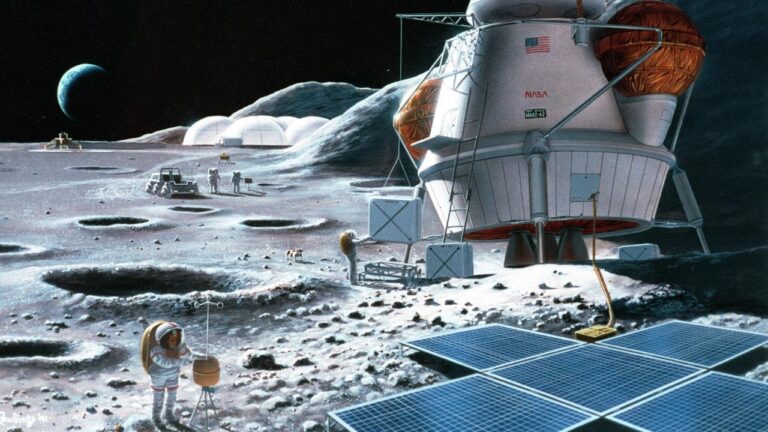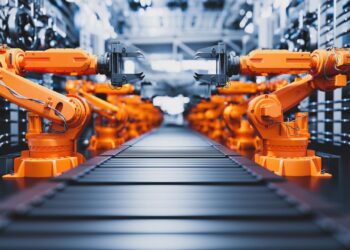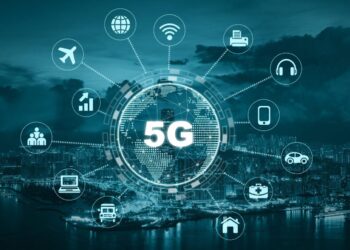Humanity’s gaze has always been drawn skyward, but today, space technology is not just about distant dreams; it’s actively pushing frontiers beyond Earth, fundamentally reshaping our understanding of the universe, driving scientific discovery, and creating unprecedented economic opportunities. This isn’t merely a return to space exploration; it’s a burgeoning new era of commercialization, innovation, and international collaboration that promises to impact life on Earth in profound ways. From advanced satellite networks that power global connectivity to revolutionary propulsion systems and the audacious vision of off-world settlements, space tech’s influence is accelerating at a breathtaking pace. This comprehensive exploration delves into the cutting-edge advancements driving this revolution, its profound impact across diverse sectors, the significant challenges it faces, and its essential role in sculpting a future where humanity’s reach truly extends to the cosmos. Understanding this burgeoning frontier is crucial for anyone navigating the intricate tapestry of 21st-century technological advancement.
The New Space Age
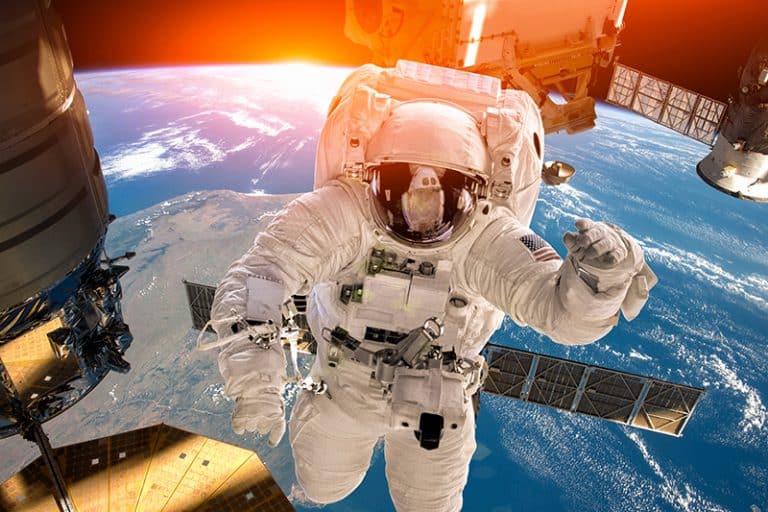
Space exploration, once the exclusive domain of government agencies driven by Cold War rivalries, has entered a dynamic new phase characterized by rapid technological innovation and burgeoning private sector involvement.
A. The First Space Age
The initial decades of space exploration were largely a race between superpowers.
- Sputnik (1957): The Soviet Union’s launch of the first artificial satellite ignited the space race.
- Apollo Moon Landings (1969): NASA’s triumph symbolized human ingenuity and monumental government investment.
- Focus: Geopolitical prestige, scientific discovery, and national security.
- Characteristics: Extremely high costs, bespoke hardware, long development cycles, and limited commercial application.
B. The Shuttle Era and ISS
The late 20th and early 21st centuries saw a shift towards reusable spacecraft and international cooperation.
- Space Shuttle Program: Emphasized reusable launch vehicles, though costs and safety issues proved challenging.
- International Space Station (ISS): A testament to global scientific and engineering collaboration, providing a permanent human presence in low Earth orbit (LEO).
- Continued Government Dominance: While some commercial services emerged, the vast majority of activities remained government-funded and controlled.
C. The New Space Era
The current era, often called “New Space,” is defined by private companies driving innovation and reducing costs.
- Decreasing Launch Costs: Reusable rockets (e.g., SpaceX Falcon 9) have dramatically cut the cost of sending payloads to orbit, democratizing access to space.
- Miniaturization of Satellites: Development of small satellites (CubeSats, nanosatellites) makes space missions more affordable and flexible.
- Private Investment: Billions of dollars pouring into space startups from venture capitalists and private investors.
- Focus: Commercial services (satellite internet, Earth observation), space tourism, asteroid mining, and future space manufacturing.
- Government as Customer: Space agencies are increasingly contracting with private companies for launch services, cargo resupply, and even crew transport.
This shift is opening space to a wider array of players and applications, fostering a vibrant ecosystem of innovation.
The Foundational Technologies Driving Space Tech Frontiers
The ambitious vision of extending humanity’s presence and capabilities in space relies on a sophisticated convergence of cutting-edge technologies.
A. Advanced Propulsion Systems
Propulsion is fundamental to space travel, and new technologies are making it more efficient and powerful.
- Reusable Rocket Technology: (e.g., SpaceX Falcon 9, Blue Origin New Shepard) Vertically landing and reusing booster rockets significantly reduces launch costs, making space more accessible.
- Electric Propulsion (Ion Thrusters, Hall Effect Thrusters): Use electricity to ionize and accelerate propellant, providing very high fuel efficiency (high specific impulse) for long-duration missions, though with lower thrust. Ideal for satellite station-keeping and deep-space probes.
- Nuclear Propulsion (Thermal and Electric): Uses nuclear reactions for power or thrust, offering potentially much faster transit times for deep-space missions and greater power for off-world bases. Still largely in R&D and faces significant regulatory hurdles.
- Advanced Chemical Propulsion: Improvements in traditional rocket fuels and engine designs for greater efficiency and thrust-to-weight ratio.
- Solar Sails: Use the pressure of sunlight on large, ultrathin membranes for propulsion in space, requiring no propellant and offering continuous acceleration for long journeys.
- Breakthrough Propulsion Concepts: Hypersonic air-breathing engines (like scramjets), warp drives (theoretical), and other exotic concepts are in very early research stages, pushing the boundaries of physics.
B. Satellite Technology
Satellites are the workhorses of modern space tech, and their capabilities are rapidly expanding.
- Small Satellites (CubeSats, Nanosatellites): Standardized, miniature satellites that are cheaper and faster to develop and launch, enabling large constellations for global coverage.
- Mega-Constellations (e.g., Starlink, OneWeb): Thousands of LEO satellites working together to provide global internet access, Earth observation, and other services with low latency.
- Advanced Sensors: High-resolution cameras (optical and synthetic aperture radar – SAR), hyperspectral imaging, and atmospheric sensors for unprecedented Earth observation and climate monitoring.
- Inter-Satellite Communication: Laser links and other technologies allowing satellites to communicate directly with each other, reducing reliance on ground stations.
- AI on Board: Integrating AI for autonomous operations, real-time data processing, and anomaly detection on satellites, reducing the need for constant ground control.
C. Robotics and Automation
Robots are indispensable for dangerous, repetitive, or distant space tasks.
- Space-Grade Robotics: Robotic arms (e.g., Canadarm2 on ISS), rovers (e.g., Mars Perseverance), and autonomous spacecraft designed to operate in the harsh vacuum of space.
- In-Orbit Servicing, Assembly, and Manufacturing (ISAM): Robots performing tasks like refueling satellites, repairing space telescopes, assembling large structures in orbit, and even 3D printing components in space.
- Autonomous Navigation: AI-powered systems for spacecraft to navigate and dock autonomously, crucial for complex missions and future space stations.
- Off-World Construction: Robots designed to mine resources and construct habitats on the Moon or Mars, preparing for human settlement.
D. Advanced Materials Science
Space demands materials that are incredibly strong, lightweight, and resilient to extreme conditions.
- Lightweight Composites: Advanced carbon fiber composites and other materials for lighter spacecraft structures, increasing payload capacity.
- High-Temperature Ceramics and Alloys: Materials capable of withstanding the extreme heat of re-entry or rocket engine exhaust.
- Radiation Shielding: Materials designed to protect spacecraft and astronauts from harmful space radiation.
- Self-Healing Materials: Materials that can repair minor damage in space, extending the lifespan of spacecraft.
- Additive Manufacturing (3D Printing) in Space: Printing tools, spare parts, and even rocket components in space, reducing the need to launch everything from Earth.
E. AI and Big Data Analytics
AI is becoming central to managing vast space infrastructure and making sense of cosmic data.
- Autonomous Operations: AI enables spacecraft to make decisions independently, optimize maneuvers, and respond to anomalies without constant human input.
- Data Processing: AI algorithms process the enormous volumes of data from Earth observation satellites, telescopes, and space probes, extracting meaningful insights (e.g., identifying climate patterns, detecting exoplanets).
- Mission Planning and Optimization: AI helps plan complex trajectories, optimize fuel consumption, and manage mission schedules.
- Space Debris Management: AI tracks and predicts the movement of space debris, helping spacecraft avoid collisions.
- Predictive Maintenance: AI monitors the health of spacecraft systems, predicting failures before they occur.
Space Tech’s Transformative Impact Across Industries
The advancements in space technology are not just pushing humanity further into the cosmos; they are fundamentally reshaping industries and impacting daily life on Earth.
A. Global Connectivity and Communication
Satellite constellations are revolutionizing global internet access.
- Broadband from Space: Mega-constellations like Starlink and OneWeb provide high-speed, low-latency internet access to remote and underserved areas globally, bridging the digital divide.
- IoT Connectivity: Satellites provide ubiquitous connectivity for IoT devices in agriculture, logistics, environmental monitoring, and remote infrastructure, even where terrestrial networks don’t reach.
- Emergency Communications: Satellite communication remains critical for disaster response and resilient communication during outages of ground infrastructure.
- Future Telecommunications: Advanced satellite networks will complement and integrate with 5G and 6G terrestrial networks.
B. Earth Observation and Climate Monitoring
Satellites provide invaluable data for understanding our planet and climate change.
- Climate Change Monitoring: Tracking greenhouse gas emissions, deforestation, ice sheet melt, sea level rise, and weather patterns with unprecedented accuracy.
- Environmental Management: Monitoring water resources, pollution, and biodiversity.
- Disaster Response and Relief: Rapid assessment of damage from natural disasters (e.g., floods, earthquakes, wildfires), aiding rescue and recovery efforts.
- Precision Agriculture: Satellite imagery provides data for optimizing crop yields, irrigation, and fertilizer use.
- Urban Planning: Monitoring urban growth, infrastructure development, and resource consumption.
C. Navigation and Timing
Satellite navigation systems are deeply integrated into modern life.
- Global Positioning Systems (GPS, Galileo, GLONASS, BeiDou): Essential for navigation in cars, smartphones, aviation, and marine transport.
- Precision Agriculture: Guiding autonomous farm equipment with centimeter-level accuracy.
- Logistics and Supply Chain: Tracking shipments and optimizing delivery routes.
- Financial Transactions: Satellite-provided precise timing signals are critical for synchronizing global financial markets.
- Critical Infrastructure: Essential for synchronizing power grids, communication networks, and other vital infrastructure.
D. Manufacturing and Resource Management
Space tech is opening up entirely new economic frontiers.
- Space Mining: The long-term potential for asteroid mining to extract valuable resources (e.g., rare earth elements, platinum group metals) that are scarce on Earth.
- In-Space Manufacturing: Creating advanced materials or complex structures in microgravity that are impossible or difficult to produce on Earth, for use in space or for specialized Earth-based applications.
- Space Tourism: A nascent but growing industry offering suborbital and orbital flights for paying customers.
- Off-World Habitation: Developing technologies for sustainable human settlements on the Moon or Mars, driving innovation in life support systems, resource utilization, and autonomous construction.
E. Research and Development
Space remains a unique laboratory for fundamental scientific inquiry.
- Astrophysics and Cosmology: Space telescopes (e.g., James Webb Space Telescope) provide unparalleled views of the universe, leading to discoveries about exoplanets, galaxies, and the origins of the cosmos.
- Microgravity Research: Experiments conducted on the ISS or other orbital platforms yield insights into materials science, biology, and human physiology in microgravity, benefiting Earth-based research.
- Planetary Science: Probes and rovers explore other planets and celestial bodies, gathering data that helps us understand the formation and evolution of our solar system.
- Fundamental Physics: Testing theories of gravity and relativity in the unique environment of space.
The Challenges and Hurdles for Space Tech
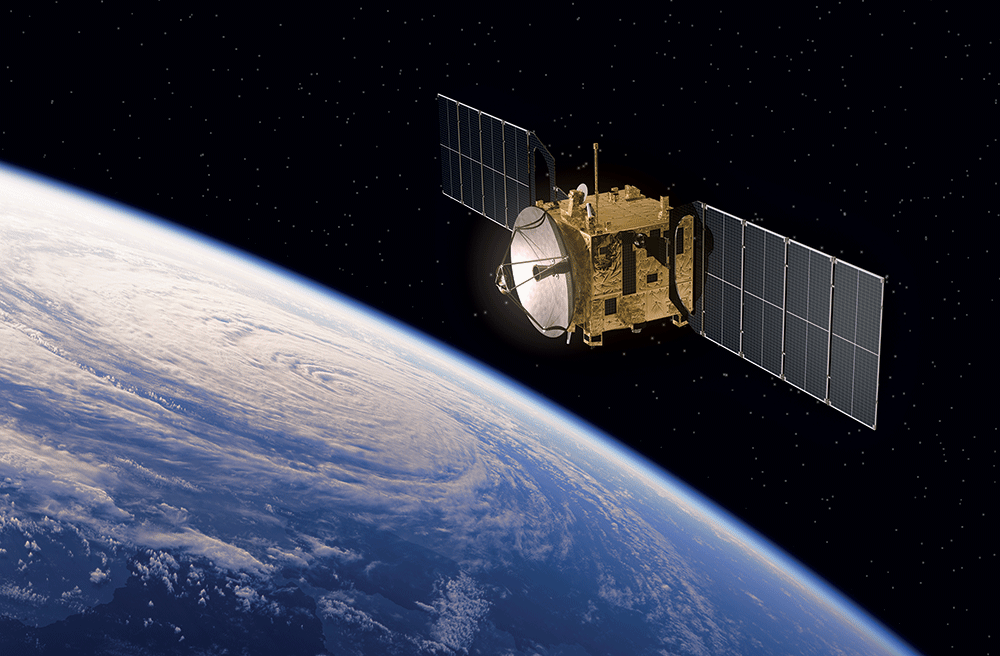
Despite its accelerating pace, the space industry faces significant technical, economic, and geopolitical challenges that must be addressed for its sustained growth and responsible development.
A. Cost and Investment
While launch costs are falling, space remains an inherently expensive endeavor.
- Development Costs: Research and development for new spacecraft, propulsion systems, and space infrastructure requires massive upfront investment.
- Launch Costs: While reduced, sending payloads to orbit is still expensive, especially for large or complex missions.
- Insurance: High costs for insuring valuable space assets.
- Funding Models: Reliance on venture capital, government contracts, and public-private partnerships.
B. Space Debris
The increasing number of objects in orbit poses a significant and escalating risk.
- Collision Risk: Active satellites and spacecraft are at risk of colliding with defunct satellites, rocket bodies, and fragments from past collisions, creating more debris in a chain reaction (Kessler Syndrome).
- Threat to Operations: Debris can damage or destroy operational satellites, disrupting critical services on Earth.
- Mitigation Strategies: Developing technologies for active debris removal, better tracking, and designing spacecraft for deorbiting at end-of-life.
- International Cooperation: The need for global agreements on debris mitigation and removal.
C. Technical Complexity and Reliability
Space missions are inherently complex and unforgiving.
- Extreme Environment: Space is a vacuum with extreme temperature fluctuations, radiation, and micrometeoroids, requiring highly robust and reliable hardware.
- Long Development Cycles: Despite acceleration, developing complex spacecraft can still take years, with little room for error.
- Launch Failures: Even with reusable rockets, launch failures can occur, resulting in significant financial losses and delays.
- Radiation Hardening: Designing electronics and materials to withstand the harsh radiation environment in space.
D. Regulation and Governance
The rapid commercialization of space is outpacing existing international laws and norms.
- Space Traffic Management: The need for clear rules and international cooperation to manage the increasing number of satellites and prevent collisions.
- Resource Exploitation: Legal frameworks for space mining and the ownership of extraterrestrial resources are unclear and debated.
- Space Tourism Regulation: Developing safety standards and liability frameworks for commercial spaceflights carrying passengers.
- Environmental Protection: Preventing contamination of celestial bodies (e.g., Mars) by Earth-based microbes.
- Weaponization of Space: The risk of an arms race in space and the need for international treaties to prevent the weaponization of orbital assets.
E. Human Health and Safety in Space
Protecting astronauts from the perils of space travel is paramount.
- Radiation Exposure: Long-duration missions (e.g., to Mars) expose astronauts to high levels of cosmic and solar radiation, posing significant health risks (cancer, organ damage).
- Microgravity Effects: Prolonged exposure to microgravity causes bone density loss, muscle atrophy, cardiovascular deconditioning, and fluid shifts.
- Psychological Challenges: Isolation, confinement, and stress on long missions.
- Life Support Systems: Developing closed-loop life support systems for long-duration missions and off-world habitats that recycle air, water, and waste efficiently.
- Emergency Response: Limited options for medical emergencies in deep space.
The Future of Space Tech
Despite the formidable challenges, the trajectory for space technology is one of accelerating ambition, deeper integration with terrestrial life, and ultimately, the expansion of humanity beyond Earth.
A. Permanent Lunar Presence and Martian Colonization
The long-term vision includes sustained human presence beyond LEO.
- Lunar Gateway: A planned small space station orbiting the Moon, serving as a hub for lunar missions and a stepping stone to Mars.
- Artemis Program: NASA’s initiative to return humans to the Moon and establish a long-term presence there.
- Mars Missions: Ambitious plans from NASA, SpaceX, and others for human missions to Mars, laying the groundwork for eventual colonization.
- Space Habitats: Development of closed-loop systems and infrastructure for long-term human survival in off-world environments.
B. In-Space Resource Utilization (ISRU)
Key to sustainable deep-space exploration and settlement.
- Water Ice Extraction: Mining water ice on the Moon or Mars for drinking water, oxygen production, and rocket fuel (hydrogen/oxygen).
- Regolith Processing: Using lunar or Martian soil (regolith) to create building materials, radiation shielding, or extract valuable elements.
- 3D Printing with Local Materials: Manufacturing habitats, tools, and spare parts on celestial bodies using local resources.
C. Advanced Satellite Services and Space-Based Data
The growth of satellite applications will continue unabated.
- Global Monitoring: Even more comprehensive and real-time Earth observation for climate, agriculture, disaster management, and security.
- Space-Based Solar Power: Beaming solar energy collected in space down to Earth, offering a continuous, clean energy source.
- Quantum Communication from Space: Satellites providing inherently secure communication links using quantum key distribution.
- Space-Based Manufacturing for Earth: Production of advanced materials in microgravity for high-value Earth-based industries.
D. Next-Generation Propulsion and Power
Pushing the boundaries of how we travel and power missions.
- Fusion Propulsion: Theoretical engines powered by nuclear fusion, offering immense power and speed for interstellar travel.
- Antimatter Propulsion: Another highly theoretical concept for incredibly fast propulsion.
- Miniaturized Nuclear Reactors: Small, safe nuclear reactors for powering lunar or Martian bases.
E. AI and Autonomy for Space Missions
Greater reliance on intelligent systems for complex and distant operations.
- Fully Autonomous Rovers and Probes: Missions that can plan, execute, and adapt to unforeseen circumstances without human intervention.
- AI-Guided Spacecraft: AI managing complex spacecraft systems, optimizing trajectories, and diagnosing issues in real-time.
- Swarm Satellites: Large numbers of small, autonomously coordinating satellites for distributed sensing and communication.
Conclusion
Space Tech Frontiers is not just a technological race; it is humanity’s collective odyssey towards a future where our reach extends beyond Earth’s gravity. From the democratized access provided by reusable rockets and mega-constellations to the audacious vision of off-world settlements and resource utilization, space technology is profoundly reshaping our capabilities. While formidable challenges remain—ranging from the pervasive threat of space debris and the complexities of human survival in hostile environments to the urgent need for international governance—the relentless drive for discovery, economic opportunity, and the long-term survival of our species ensures its continued, rapid evolution. By fostering innovation, investing in critical infrastructure, and establishing responsible frameworks, we can harness the immense potential of space to address terrestrial challenges, inspire future generations, and ultimately, secure a truly interplanetary future for humankind. Our destiny is not just on Earth; it lies among the stars, and space tech is paving the way.

